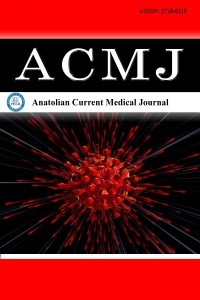1.
Khoo TK, Yarnall AJ, Duncan GW, et al. The spectrum ofnonmotor symptoms in early Parkinson disease. Neurology.2013;80(3):276-281.
2.
Djaldetti R, Lev N, Melamed E. Lesions outside the CNS inParkinson’s disease. Mov Disord. 2009;24(6):793-800.
3.
Merola A, Romagnolo A, Comi C, et al. Prevalence and burdenof dysautonomia in advanced Parkinson’s disease. Mov Disord.2017;32(5):796-797.
4.
Mendoza-Velásquez JJ, Flores-Vázquez JF, Barrón-Velázquez E,Sosa-Ortiz AL, Illigens BW, Siepmann T. Autonomic dysfunctionin α-synucleinopathies. Front Neurol. 2019;10:363.
5.
Siddiqui MF, Rast S, Lynn MJ, Auchus AP, Pfeiffer RF. Autonomicdysfunction in Parkinson’s disease: a comprehensive symptomsurvey. Parkinsonism Relat Disord. 2002;8(4):277-284.
6.
Stankovic I, Petrovic I, Pekmezovic T, et al. Longitudinalassessment of autonomic dysfunction in early Parkinson’sdisease. Parkinsonism Relat Disord. 2019;66:74-79.
7.
De Pablo-Fernandez E, Tur C, Revesz T, Lees AJ, Holton JL,Warner TT. Association of autonomic dysfunction with diseaseprogression and survival in Parkinson disease. JAMA Neurol.2017;74(8):970-976.
8.
Idiaquez J, Benarroch EE, Rosales H, Milla P, Ríos L. Autonomicand cognitive dysfunction in Parkinson’s disease. Clin Auton Res.2007;17(2):93-98
9.
Aygun D. , Akpinar C. K. , Yon S. , Onar M. K. Effect of clinicalautonomic dysfunction on cognitive functions in Parkinson’sdisease. Dicle Med J. 2017;44(3):225-231.
10.
Postuma RB, Berg D, Stern M, et al. MDS clinical diagnosticcriteria for Parkinson’s disease. Mov Disord. 2015;30(12):1591-1601. doi:10.1002/mds.26424
11.
Tomlinson CL, Stowe R, Patel S, Rick C, Gray R, Clarke CE.Systematic review of levodopa dose equivalency reporting inParkinson’s disease. Mov Disord. 2010;25(15):2649-2653.
12.
Goetz CG, Poewe W, Rascol O, et al. Movement Disorder SocietyTask Force report on the Hoehn and Yahr staging scale: statusand recommendations. Mov Disord. 2004;19(9):1020-1028.
13.
Rodriguez-Blazquez C, Forjaz MJ, Frades-Payo B, de Pedro-Cuesta J, Martinez-Martin P. Longitudinal Parkinson’s diseasepatient study, estudio longitudinal de pacients con enfermedadda Parkinson group. independent validation of the scales foroutcomes in Parkinson’s disease-autonomic (SCOPA-AUT). EurJ Neurol. 2010;17(2):194-201.
14.
Ozdilek B, Kenangil G. Validation of the Turkish version of theMontreal cognitive assessment scale (MoCA-TR) in patientswith Parkinson’s disease. Clin Neuropsychol. 2014;28(2):333-343.
15.
Parkinson J. An essay on the shakıng palsy. Arch Neurol.1969;20(4):441-445.
16.
den Hartog Jager Wa, Bethlem J. The distribution of Lewy bodiesin the central and autonomic nervous systems in idiopathicparalysis agitans. J Neurol Neurosurg Psychiatry. 1960;23(4):283-290.
17.
Iwanaga K, Wakabayashi K, Yoshimoto M, et al. Lewy body-typedegeneration in cardiac plexus in Parkinson’s and incidentalLewy body diseases. Neurology. 1999;52(6):1269-1271.
18.
Sung HY, Park JW, Kim JS. The frequency and severity ofgastrointestinal symptoms in patients with early Parkinson’sdisease. J Mov Disord. 2014;7(1):7-12.
19.
Verbaan D, Marinus J, Visser M, van Rooden SM, StiggelboutAM, van Hilten JJ. Patient-reported autonomic symptoms inParkinson disease. Neurology. 2007;69(4):333-341.
20.
Arı S, Candan F, Işık N, Öztop Ö, Aydın Cantürk İ, Arıcı DüzÖ. Autonomic symptoms in idiopathic Parkinson’s disease.Cumhuriyet Med J. 2014;36(3):344-349
21.
Zadikoff C, Fox SH, Tang-Wai DF, et al. A comparison of themini mental state exam to the Montreal cognitive assessment inidentifying cognitive deficits in Parkinson’s disease. Mov Disord.2008;23(2):297-299.

